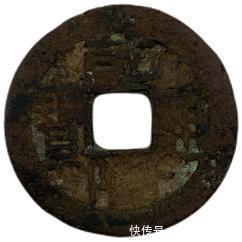精品推荐-乾隆通宝
乾隆通宝铸于清高宗乾隆年间(1736-1795年),背面的满文比较复杂,可以参考华光普的《中国古钱币目录》,上面有很详细的价格和钱币拓片。历史年代为,清高宗乾隆年间(1736~1795年)。绝大部分为小平钱,新疆红钱有部分当十钱,宝泉、宝巩发现有大钱,但应为开炉或后铸花钱,非行用品。
Qianlong Tongbao was cast during the reign of Emperor Qianlong of the
Qing Dynasty (1736 - 1795). The Manchu text on the back is more
complex. You can refer to Huaguang Pu's Catalogue of Ancient Chinese
coins, which has very detailed prices and coin rubbings. The historical
period is, during the reign of Emperor Qianlong of the Qing Dynasty
(1736 ~ 1795). Most of them are small flat money, Xinjiang red money has
part when 10 money, Baoquan, Baogang found a lot of money, but should
be spending money for the furnace or after casting, non - line supplies.

乾隆通宝钱径:22.48mm,厚:1.44mm,重:3.2g。钱面文字"乾隆通宝"以楷书书写,其字从上而下而右而左直读。钱背文字沿雍正满文钱式穿孔左边有"宝"字,穿孔右边铸有各局名。乾隆通宝连宝泉、宝源在内先后有29局开铸,多用黄铜与青铜,也引进国外洋铜浇制法。新疆地区新用方孔圆钱,开设伊犁、阿克苏、乌什、叶尔羌、喀什葛尔、库车等局,因用自产红铜鼓铸、故称为"新疆红钱"或"普尔钱"("普尔"维语即钱的意思)。乾隆通宝只少数钱背文看见星号或汉字。乾隆通宝还有合面钱、吉语钱以及私铸劣质钱、鹅眼钱等,品类不下百种,存于世上的有雕母数种,至为珍贵。
Qianlong Tongbao Qian diameter: 22.48mm,厚:1.44mm,重:3.2g. Qian noodle
text "Qianlong Tongbao" written in regular script, the word from top to
right and left straight read. Qian back text along Yongzheng Manchu
money perforation left "treasure" , perforation right cast the name of
each bureau. Qianlong Tongbao Lian Baoquan, Baoyuan has 29 bureaus of
casting, the use of brass and bronze, also introduced foreign copper
pouring method. Xinjiang uses new square money, including Yili, Aksu,
Wushi, Yerqiang, Kashgar, Kuqa and other bureaus. It is called "Xinjiang
red money" or "Poole money" because "Poole" dimension means money).
Qianlong Tongbao only a few Qian to recite the asterisk or Chinese
characters. Qianlong Tongbao also has the noodles money, auspicious
money and private cast inferior money, goose eye money, no less than 100
categories, stored in the world has several kinds of carved mother, is
precious.

雍正十三年(1735年),清高宗即位,改元乾隆。铸行"乾隆通宝",要求仍重一钱二分,该钱书法铸工都比雍正时更为精美。最初清政府仍继续执行通货紧缩的政策。钱局较雍正时有所增减,首先在乾隆四年,停了宝河、宝巩、宝济三局,于乾隆五年时开宝福局,七年开宝桂局,十年开宝直局。乾隆朝以前的制钱不加锡,以铜、铅、锌配制,称之为"黄钱",在乾隆五年规定在铸钱铜料之中加百分之二的锡,称为"青钱"。官方说是为杜绝私钱,实则无异于减重。"乾隆四十年时,私铸情况日盛,各省官员出现盗铸,政府对此无计可施,加上云南铜产量逐年递减,导致铜价飞涨,铸钱成本也随之水涨船高。清政府继而又采取了通货紧缩政策,先后停铸了宝直、大理、广西、临安等局,同时鼓励商人从海外进口铜材。但是这些措施未能从根本上解决问题,私铸虽有所减少,但官钱不见增加,民间交易缺钱,就出现了使用古钱的现象。到了乾隆五十年后,又相继开了宝直等局,同时放宽了铸钱的标准,所以导致乾隆后期制钱的质量参差不齐,大不如初的情况。此外在乾隆朝时期在新疆出了"乾隆通宝"红钱(也做普尔钱,"普尔"维语即钱的意思),是以新疆产铜为原料,在新疆地区铸行的,此后各朝均有铸行。
In the 13 th year of Yongzheng (1735), Emperor Gaozong ascended the
throne and changed the Yuan to Qianlong. Casting line "Qianlong Tongbao"
, the requirements are still weighing one money and two points, the
money calligraphy and casting workers are more exquisite than Yongzheng
Shi. Initially, the Qing government continued to implement the deflation
policy. The Money Bureau increased or decreased with Yongzheng. First
of all, in the fourth year of Qianlong, Baohe, Baogong and Baoji were
stopped, the Baofu Bureau in the fifth year of Qianlong, the seven
years, and the Baoyi Bureau in ten years. Before the Qianlong Dynasty,
Emperor Qianlong did not make tin, made with copper, lead and zinc,
called "yellow money" . In the fifth year of Qianlong, two percent of
the tin should be added to the cast copper materials, which was called
"green money" . Officials say that is to eliminate private money is
actually tantamount to losing weight. "In the 40 th year of Qianlong,
the private casting was booming, and provincial officials appeared
stealing casting. The government had no means to do. Moreover, the
decreasing copper production in Yunnan year by year, leading to the
soaring copper price and the cost of casting money increased. The Qing
government then adopted the deflation policy, successively stopped
casting Baozhong, Dali, Guangxi, Lin ' an and other bureaus, and
encouraging merchants to import copper from overseas.
